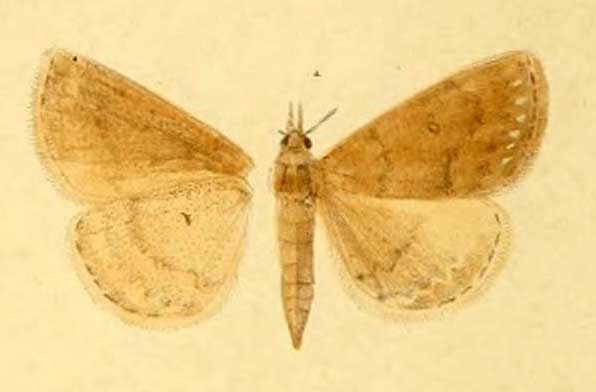
Superregnum: Eukaryota
Cladus: Unikonta
Cladus: Opisthokonta
Cladus: Holozoa
Regnum: Animalia
Subregnum: Eumetazoa
Cladus: Bilateria
Cladus: Nephrozoa
Cladus: Protostomia
Cladus: Ecdysozoa
Cladus: Panarthropoda
Phylum: Arthropoda
Subphylum: Hexapoda
Classis: Insecta
Cladus: Dicondylia
Subclassis: Pterygota
Cladus: Metapterygota
Infraclassis: Neoptera
Cladus: Eumetabola
Cladus: Endopterygota
Superordo: Panorpida
Cladus: Amphiesmenoptera
Ordo: Lepidoptera
Subordo: Glossata
Cladus: Coelolepida
Cladus: Myoglossata
Cladus: Neolepidoptera
Infraordo: Heteroneura
Cladus: Eulepidoptera
Cladus: Ditrysia
Cladus: Apoditrysia
Cladus: Obtectomera
Cladus: Macroheterocera
Superfamilia: Noctuoidea
Familia:Erebidae
Subfamilia: Herminiinae
Genus: Chytolita
Species: C. morbidalis
Chytolita morbidalis, the morbid owlet moth or morbid owlet, was first described by Achille Guenée in 1854.[3] It is found in large parts of North America, from coast to coast in the north and south to North Carolina, Texas and Florida in the west.[4] The habitat consists of deciduous woods and edges.
The wingspan is 29–35 mm. The forewings are pale grayish white with diffuse, brownish or orangish lines. The hindwings are even paler with faint grayish veins. Adults are on wing from May to August. There seems to be one generation per year.
The larvae feed on the leaves of various deciduous trees and have been reared on dandelion, grass, hazel and lettuce.[5] There are also records for dead leaves, including dried white oak leaves.
Taxonomy
Chytolita petrealis is now considered a synonym of C. morbidalis because DNA barcode analysis has revealed little barcode variation among specimens of both forms examined across a wide geographic range.[3] The smaller, darker "petrealis" form was known by the common names lesser gray chytolita, stone-winged owlet or lesser luteous snout.
References
Lafontaine, Donald; Schmidt, Christian (March 19, 2010). "Annotated check list of the Noctuoidea (Insecta, Lepidoptera) of North America north of Mexico". ZooKeys (40): 26. doi:10.3897/zookeys.40.414.
Zahiri, Reza; et al. (2011). "Molecular phylogenetics of Erebidae (Lepidoptera, Noctuoidea)". Systematic Entomology. 37: 102–124. doi:10.1111/j.1365-3113.2011.00607.x. S2CID 84249695.
Crabo, L. G.; Davis, M.; Hammond, P.; Mustelin, T & Shepard, J. (2013). "Five new species and three new subspecies of Erebidae and Noctuidae (Insecta, Lepidoptera) from Northwestern North America, with notes on Chytolita Grote (Erebidae) and Hydraecia Guenée (Noctuidae)". ZooKeys 264: 85-123. doi:10.3897/zookeys.264.4304
"930502.00 – 8355 – Chytolita morbidalis – Morbid Owlet Moth – (Guenée, 1854)". North American Moth Photographers Group. Mississippi State University. Retrieved January 26, 2020.
McLeod, Robin (May 16, 2015). "Species Chytolita morbidalis - Morbid Owlet - Hodges#8355". BugGuide. Retrieved January 26, 2020.
Wikimedia Commons has media related to Chytolita.
Wikispecies has information related to Chytolita.
Pitkin, Brian & Jenkins, Paul (November 5, 2004). "Chytolita Grote, 1873". Butterflies and Moths of the World. Natural History Museum, London. Retrieved January 26, 2020.
Anweiler, G. G. (2007). "Species Details Chytolita petrealis". University of Alberta Museums. E.H. Strickland Entomological Museum. Retrieved November 8, 2020.
Retrieved from "http://en.wikipedia.org/"
All text is available under the terms of the GNU Free Documentation License

